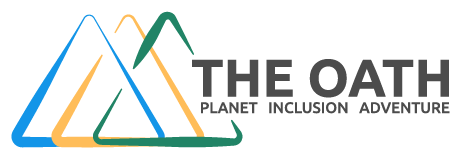The OATHmeal: Know, DO, Change
Buenos dias and welcome to the OATHmeal! What is the OATHmeal you ask? Well, it’s a quick, delicious, and nutritious start to your day as you go out as your WHOLElistic self aligned to systemic change.
But this is no simple instant OATHmeal. This has been intentionally stewed with care so that it powers your knowing and doing. It can be informative and interesting, but more importantly, it offers an invitation to action. Here is what we’re serving up for today:”
Know. Do. Change.
This is a simple frame I often reference that supports how we incorporate new information that aligns individual work for systemic change.
To start, there is work we do within our respective communities. For example, there is the work for White people to do for and with themselves, and there is the work that a wide range of communities of color that face systemic oppression can to do for and with themselves.
There is also the work to do all together. They can connect and be related but it is also not the same.
Often, when we start on the journey of anti-oppression work, a common question is “what can I do?” or “what more can I do?” Here is where Knowing, Doing, and Changing can help.
Ingredients:
Knowing
Awareness Work
Doing
Response Work
Changing
Transformation Work
This recipe is best paired with:
An open mind
A readiness for reflection
Instructions:
1. Knowing -- This is the Awareness work.
This is opening to information you did not know. For many it starts here. It’s indicative of “how could this happen? This is shocking” and so forth. You can read texts, listen to podcasts, attend Stretch Sessions, webinars, presentations, watch videos, and so forth.
This is the space to “educate yourself.”
But if you’re not Black, it does NOT start by asking a Black friend, peer, or colleague unless they have offered. Give space, respect boundaries. Be ready to hear no.
You begin to see the interconnected and historical network of harm and oppression, for example as Dr. Rupa Marya shared with this visual:
2. Doing-- This is Response work. It’s Action.
You commit to and do an action. It can start with straightforward responses like putting out a statement, marching, making donations, etc. It can involve more than just knowing, for example examining your existing policies and practices and seeing how they can be changed. For individuals it’s habits and changes in behavior. There are a host of actions others outline and are asking for in support.
Do something. This is the space to do better.
To do NOW because yesterday is already two to five centuries too late.
3. Changing -- This is Transformation work.
It requires putting energy not just into what you are undoing but also into what you are building anew. It can also be messy and “destructive.” We often use a butterfly as an example of transformation, of metamorphosis. But as a reminder, “the transformation from worm-like caterpillar to beautiful butterfly isn’t a glamorous transformation but more of a messy, soupy metamorphosis. The caterpillar destroys its organs; it liquefies some but rebuilds others; it changes its proportions and its purpose. It becomes a different creature entirely.” This is hard work but doable.
This is prison abolition work, justice system reform, reparation work, education reform work. It is supporting interconnected work in allyship, accomplice ship, in solidarity. For me this is “life-affirming” work that is different than the reductionist mechanistic colonizing capitalist we continue to prop up. You can also look at this space as how you change the conditions under which you take action, so that the space facilitates rather than impedes the work. Like swimming with the current rather that against it.
If it helps to think of it like a fitness goal, consider this: You want to train to run a marathon. The doctor, a coach, and peers give you information that could be helpful. Yet, it still requires you to actually train and actually run on a schedule. But you also have to look at what’s in place in terms of your food at home, your friend support structure, and keeping track of goals to help you. That’s how you Know, Do, Change so that when it comes time to run that marathon you can do it in a way that helps you meet that goal without hurting yourself though of course it’s challenging and inclusive of growth-oriened discomfort.
So onward as you Know, Do, and Change.





